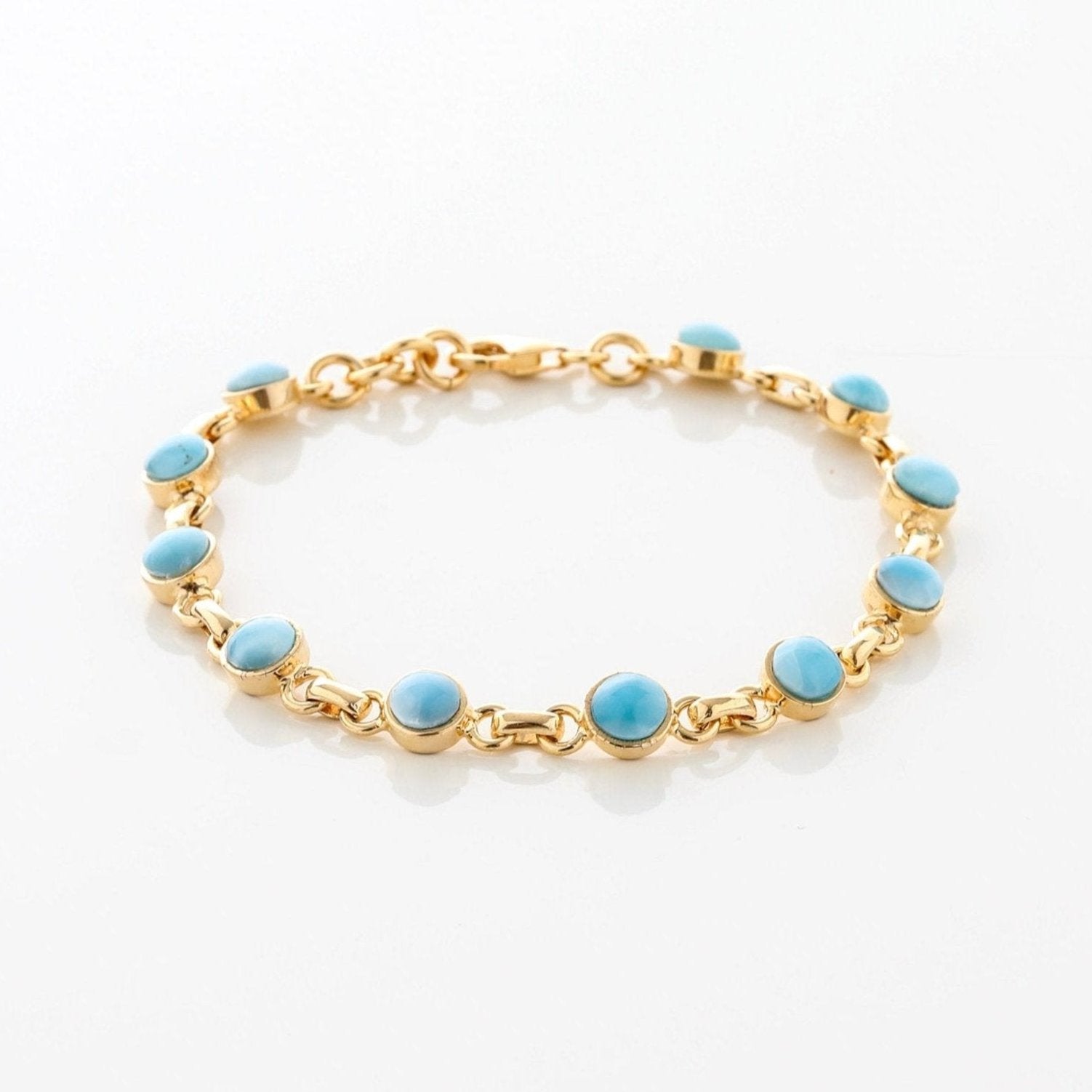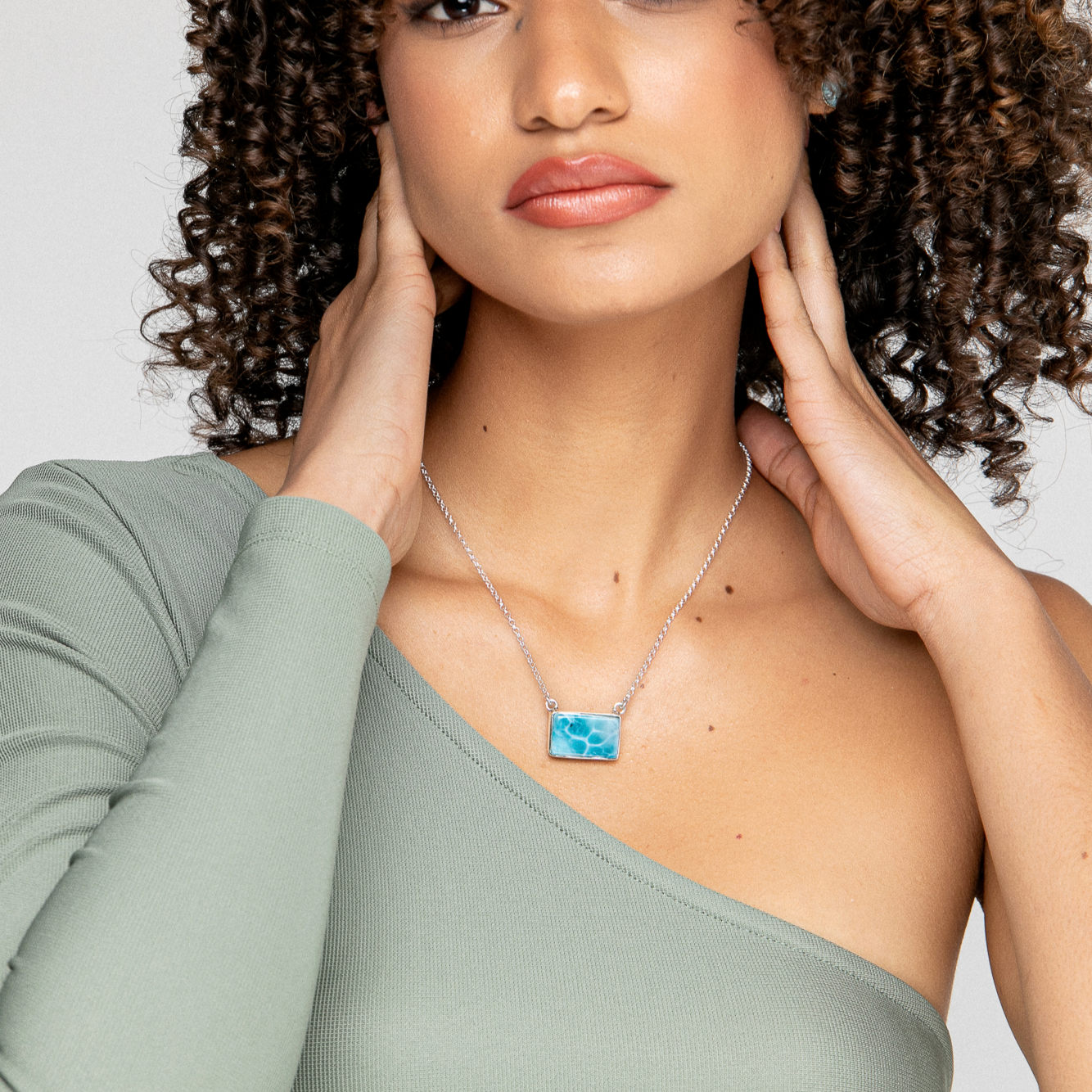What Makes Larimar Unique
Larimar is a unique blue gemstone found only in the Dominican Republic—right where we’re from. Mined in the mountains of Barahona, each stone is extracted by hand and carefully selected before being crafted into jewelry. This page explores the geology, history, and exceptional characteristics of Larimar, from its volcanic origins to the moment it reaches your hands.
A Single Deposit in the World
WHERE LARIMAR IS FOUND
The only known Larimar deposit on Earth is located in Los Chupaderos, about seven miles northwest of La Ciénaga and southwest of Barahona, in the southern region of the Dominican Republic.
This volcanic area is composed of altered porphyritic andesites and basalts surrounded by Eocene limestone fractured by ancient volcanic activity.
Deep within these rocks, Larimar forms as small, oval-shaped nodules filling gas cavities created during basalt crystallization. These nodules often show concentric structures, with centers rich in calcium oxide (CaO)—a key component of Larimar’s chemical makeup.

What is Larimar Made Of?
Composition
Larimar is a rare blue variety of pectolite, found only in the Dominican Republic. While typical pectolite is white or gray, Larimar’s blue color comes from trace amounts of iron and magnesium, which reflect its basaltic volcanic origin. This unique composition gives Larimar its signature shades—from pale sky blue to deep, vivid Caribbean blue.
Chemical Structure
Chemical analysis shows that Larimar is primarily composed of:
- Silica (SiO₂)
- Calcium oxide (CaO)
It also contains smaller quantities of:
- Sodium oxide (Na₂O)
- Water (H₂O)
Minor impurities such as iron, magnesium, alum, and potassium appear only in trace amounts but play an important role in Larimar’s natural variation.
Inclusions
Many Larimar stones contain rare inclusions that create striking patterns.
Some examples include:
- Red dendritic formations
- Unusual tones influenced by hematite, phosphorus, magnesium, copper, or siliceous minerals
These inclusions give Larimar its expressive personality and ensure that no two stones are ever alike.

An Origin Rooted in Family and the Sea
Where the Name “Larimar” Comes From?
Before being formally named, locals in Barahona called the gemstone “Piedra Azul” (Blue Stone).
In 1974, the stone was rediscovered by Miguel Méndez, a Dominican, and Norman Rilling, a Peace Corps volunteer.
To honor Méndez’s daughter Larissa, and inspired by the sea (mar), they combined the two words into Larimar.
Rare Larimar Facts!
- Larimar Beads
Beads are the most costly Larimar product due to significant material loss during production. Only a few artisans specialize in making them. - No Official Quality Standard
Miners and vendors define quality using their own criteria since no universal grading system exists. - Exposure to Light
Prolonged sunlight or electric light can lighten Larimar’s blue color. - Translucent Larimar
Considered gem-quality and highly valued.
For a more structured, step-by-step introduction to the stone, visit The Larimar Guide, where we walk through origins, meaning, care, and how to choose your Larimar.
FAQ
Does imitation Larimar exist?
Due to its rarity, Larimar is frequently imitated—especially online. Fake pieces may appear at unusually low prices and often originate outside the Dominican Republic.
To avoid imitation:
- Purchase from trustworthy, Dominican-based sources.
- Look for natural patterns, slight variations, and authentic color depth.
- Research the seller’s reputation and craftsmanship.
Authentic Larimar jewelry handcrafted by Dominican artisans is an heirloom-quality treasure.
Why are some pieces more expensive?
Only about 10% of raw Larimar is suitable for jewelry, making high-quality pieces exceptionally rare.
Why Every Piece Matters
After processing raw Larimar, only around 10% becomes jewelry-grade. Each finished piece represents limited material and exceptional craftsmanship. This scarcity—and the heritage behind it—is what makes Larimar so special.

The Future of Larimar Mining
The long-term availability of Larimar is uncertain. In 1992, the Dominican Republic’s Mining Department estimated a 25-year lifespan for the existing deposits.
As the years pass, sourcing high-quality Larimar becomes more challenging, and the remaining material becomes more valuable.
Visitors to the Dominican Republic can explore the mines firsthand—a full-day journey offering breathtaking landscapes and vibrant local culture. The experience is both humbling and unforgettable.























































